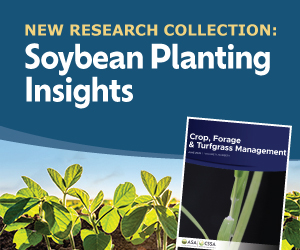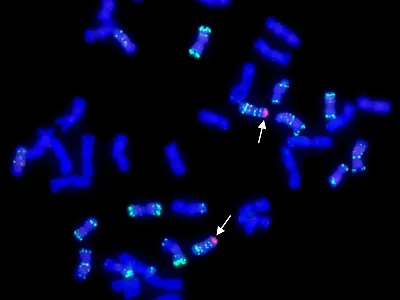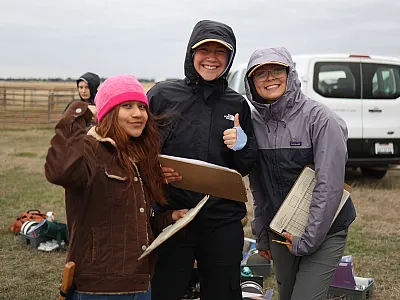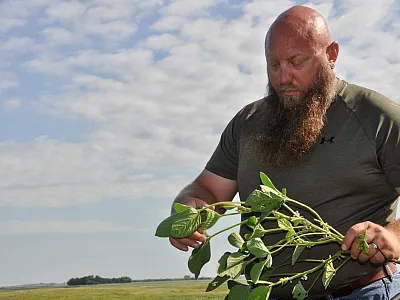Understanding soil carbon: Key ingredient to build healthy soils

Soil carbon is essential for soil health as it enhances soil structure, fuels microbial activity, improves fertility by providing nutrients, and increases resilience to environmental stresses.
Low soil carbon can lead to increased erosion, reduced microbial diversity, and a significant loss of crop productivity.
Strategies to improve soil carbon involve a combination of practices, such as adding organic soil amendments, reducing tillage, planting cover crops, diversifying cropping systems, and integrating livestock.
Soil carbon (C) might not be something you think about every day, but it’s a hidden hero beneath your feet. It forms through the carbon cycle where plants capture CO2 via photosynthesis, using it to build biomass and exude sugars through roots to feed soil microbes. As plants and microbes die, their organic matter decomposes, contributing to soil organic carbon while microbial respiration releases CO2 back into the atmosphere, creating a dynamic cycle of carbon storage and release. The soil carbon (C) stock is a critical part of the global C cycle. It comprises soil organic carbon (SOC) and soil inorganic carbon (SIC) and is the largest reservoir of the terrestrial biosphere (Figure 1; Lal et al., 2021).
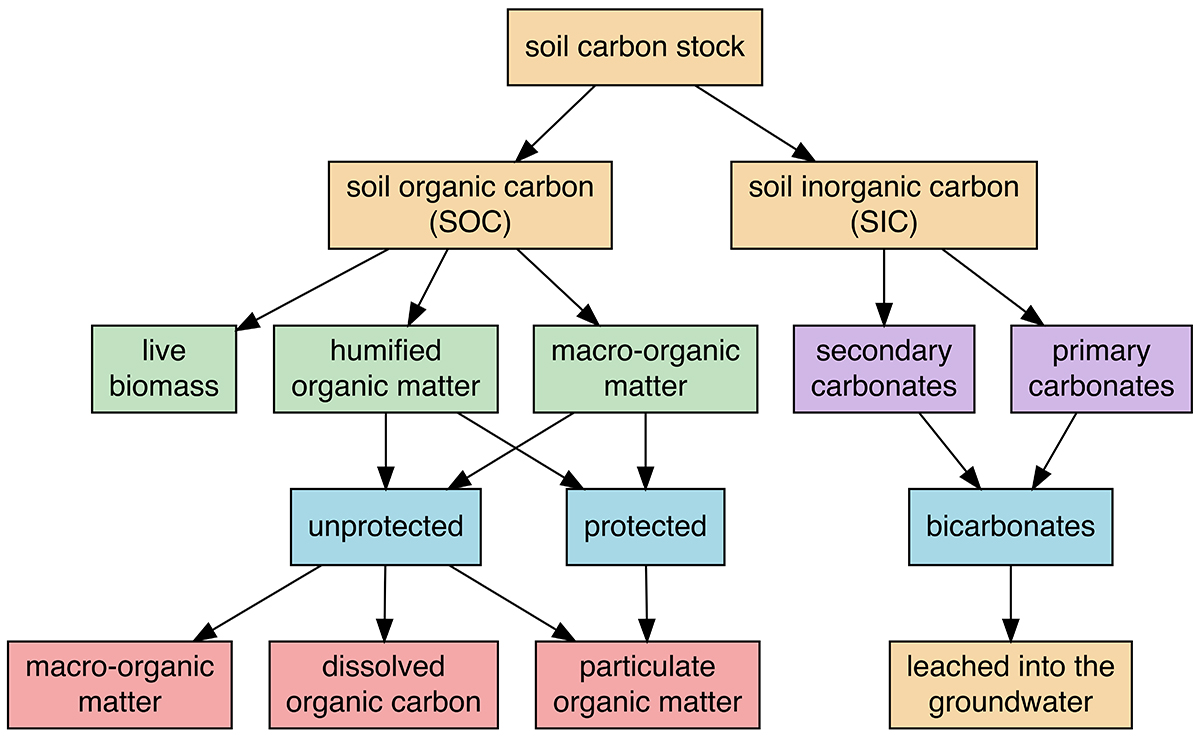
Soil carbon is formed through two primary pathways: inorganic carbon, which arises from the weathering of rocks or reactions between soil minerals and CO2, and organic carbon, which originates from the decomposition of plant and animal residues as well as microbial activity. While inorganic carbon exists mainly as carbonate minerals like calcite and dolomite, organic carbon is the dominant and most dynamic form in most ecosystems. Organic carbon forms the backbone of soil organic matter (SOM), which is vital for soil health, improving structure, water retention, and nutrient availability. Soil carbon is also central to climate mitigation efforts as it can be stored or sequestered through practices like agriculture. However, soil carbon remains dynamic—management changes can release stored carbon, meaning it is never permanently sequestered.
Role of soil carbon in soil health
More than just “dirt,” soil carbon is a vital player in keeping your soil healthy and productive. Higher levels of soil carbon, which translate to higher percentages of soil organic matter, result from the decomposition of plant and animal materials, as well as organic amendments such as manure and compost that are incorporated into the soil. Soil carbon has been recognized as the most widely measured indicator for soil health and is central to maintaining it through multiple interconnected processes.
Building better soil structure
Ever noticed how some soil is loose and crumbly while other soil is hard and clumpy? That’s soil structure. Soil consists of mineral particles and organic constituents packed into differently sized clumps (called aggregates) and organized as three-dimensional porous structures.
Soil carbon plays a big part in forming small aggregates that enhance soil porosity, allowing air and water to move freely through the soil. For instance, well-aggregated soil in organic farms tends to have better water infiltration rates, reducing surface runoff and soil erosion. Strong soil structure also supports root penetration, creating an optimal environment for crops.

Fueling microbial activity
Soil carbon supports a wide range of soil life as the source of energy, from beneficial bacteria to fungi and earthworms. A meta-analysis showed that SOC enhances soil microbial diversity, microbial functionality, and crop yields (Shu et al., 2022). Those soil microbes break down organic material to release plant-available inorganic nutrients, alter nutrient availability by oxidation, reduction, solubilization, and chelation processes—all contributing to a healthier, more balanced soil ecosystem. These processes drive global nutrient cycling and regulate around 90% of the energy flux in soil (Saccá et al., 2017).
Enhancing soil fertility
Soil carbon serves as a vast reservoir of nutrients, gradually released through the activity of soil fauna and microorganisms. This process plays a crucial role in supplying essential elements like nitrogen (N), phosphorus (P), and sulfur (S) to plants. By keeping nutrients within the root zone for longer periods, soil carbon enhances their availability to plants and reduces reliance on synthetic fertilizers. For example, in soils rich in organic matter, nitrogen is mineralized by microbes and made available to plants over time, reducing the need for synthetic fertilizers. Besides, soil organic matter also increases the cation exchange capacity of soil, thus leading to greater retention of positively charged nutrient ions such as Ca, Mg, K, Fe, Zn, and many micronutrients.
Improving soil resilience
Soils with high carbon content are more resilient to environmental stresses such as nutrient limitation, drought, flooding, extreme temperatures, high salinity, and pollution. For instance, organic carbon increases the soil's water-holding capacity, ultimately mitigating the impact of drought on crop productivity (Kane et al., 2021; Qiao et al., 2022). In regions prone to erratic weather patterns, soil carbon acts as a buffer, supporting consistent yields and fostering long-term agricultural productivity. Additionally, beneficial microbes can outcompete harmful pathogens, enhancing plant health.

Consequences of low soil carbon
The loss of soil carbon in agroecosystems has significantly degraded soil quality by altering its physical, chemical, and biological properties. Short-sighted farming practices have accelerated this decline, leading to substantial carbon loss from soils. In the European Union, cropland soils are estimated to lose approximately 7.4 million tons of carbon annually. Similarly, soils in the United States have lost an estimated 4 ± 1 gigatons (Gt) of carbon while global soil carbon losses are estimated at 78 ± 12 Gt (Lal et al., 2004). When soil carbon levels are depleted, the following negative impacts can arise.
Erosion
Low organic carbon weakens soil structure, making it more susceptible to erosion by wind and water. Poorly aggregated soils lack cohesion, leading to increased surface runoff during heavy rains. For example, in areas with intensive tillage and little organic matter input, topsoil is easily washed away, reducing land productivity.
Loss of microbial diversity
Soil carbon scarcity diminishes the food supply for microbes, reducing microbial activity and biodiversity. This loss weakens the soil’s natural defense mechanisms, increasing vulnerability to pests and diseases. For example, in degraded soils with minimal organic input, the absence of beneficial microbes like mycorrhizal fungi can leave plants more exposed to root pathogens.
Loss of crop productivity
Without sufficient soil carbon, nutrient cycling slows down, leading to reduced soil fertility. Crops struggle to access vital nutrients, resulting in stunted growth and lower yields. For instance, carbon-deficient soils may lack the microbial activity necessary to convert organic nitrogen into plant-available forms, forcing farmers to rely heavily on chemical fertilizers.
Prioritizing strategies to build and maintain soil carbon levels is essential for boosting productivity and fostering climate resilience.
Strategies to improve soil carbon
Augmenting SOC requires careful consideration and strategic planning to implement a diverse array of methods, practices, and management techniques, thereby producing demonstrable outcomes. To enhance SOC, management strategies should minimize disturbances like erosion, compaction, and excessive soil exposure while maximizing organic matter inputs. Frequently, individual practices in isolation prove inadequate, whereas an integrated approach encompassing multiple strategies facilitates more rapid and substantial improvements (Figure 2). Potential strategies encompass, but are not limited to, the following.
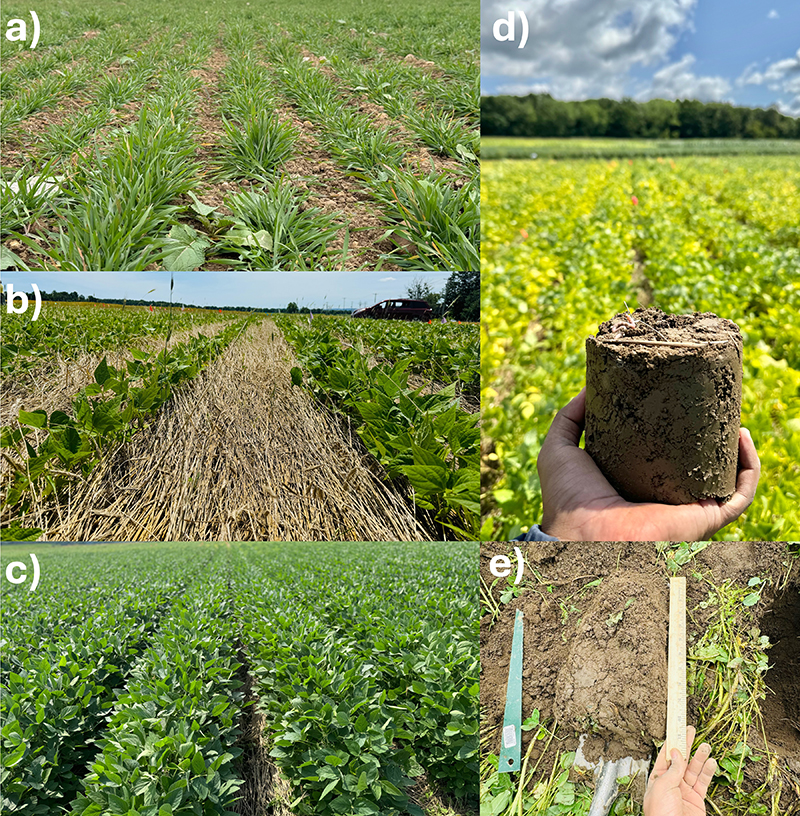
Soil amendments
Soil amendments, particularly organic amendments like manure and compost, have been shown to significantly increase soil carbon levels, especially in soils that initially have low carbon levels. This increase is due to the organic matter in these amendments breaking down and becoming incorporated into the soil.
Biochar, a more recalcitrant form of carbon, can also be used as a soil amendment to increase SOC. Biochar is produced through the pyrolysis of biomass, and it is highly resistant to decomposition. This means that biochar can remain in the soil for long periods of time, potentially aiding carbon sequestration and reducing greenhouse gas emissions.
It is important to choose the right amendment for the specific soil type and management goals. Organic amendments like manure and compost can provide a quick boost to soil carbon while biochar can offer a more long-term solution for carbon sequestration. However, it is important to note that these amendments often redistribute carbon within the soil rather than creating new stores of carbon. The carbon in the amendments may be moved from one location to another within the soil profile, but the overall amount of carbon in the soil may not necessarily increase. Additionally, the effectiveness of these amendments can vary depending on the type of soil and the depth at which the amendments are applied. In conjunction with other management practices, organic amendment can augment SOC, improving the productivity and health of soils.
Reduced tillage
Reducing tillage by adopting conservation or no-till practices can enhance soil carbon and provide numerous benefits for soil health and carbon sequestration. These include reducing or eliminating tillage as tillage can disrupt soil structure and accelerate the decomposition of organic matter. By minimizing soil disturbance, no-till farming preserves the natural soil structure and aggregates, which are essential for creating a stable and porous environment. These aggregates provide numerous microhabitats for beneficial soil organisms, including bacteria, fungi, and other microbes, which play a crucial role in decomposing organic matter and cycling nutrients.
Additionally, reducing tillage minimizes soil erosion, which can lead to the loss of valuable topsoil and organic matter. By maintaining a protective layer of plant residues on the soil surface (e.g., corn stubble), no-till practices help to prevent wind and water erosion, preserving the soil's carbon content and fertility. Furthermore, the increased organic matter content in no-till systems improves soil water retention and infiltration, reducing runoff and enhancing the soil's ability to withstand drought conditions.
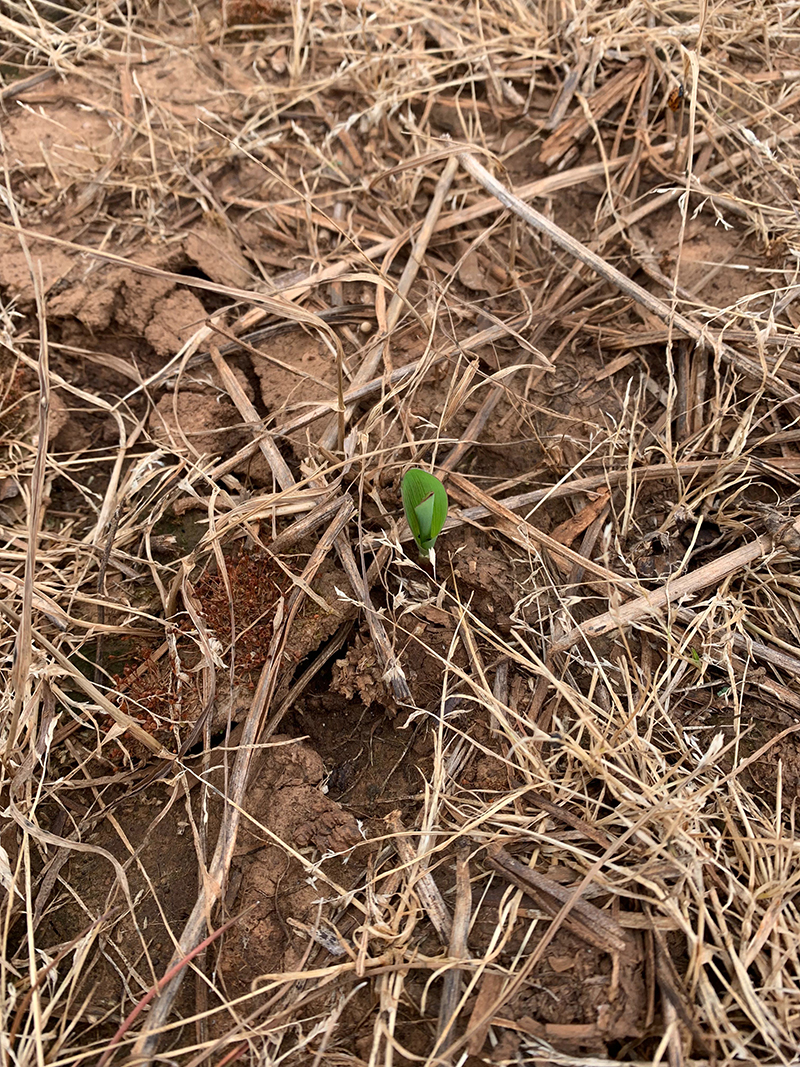
No-till farming also promotes microbial diversity in the soil. The undisturbed soil environment allows for the establishment of complex and diverse microbial communities, which are essential for maintaining soil health and ecosystem function. These microbes play a key role in breaking down organic matter, releasing nutrients, and suppressing soilborne pathogens. The increased microbial activity in no-till systems contributes to the accumulation of organic matter and the sequestration of carbon in the soil.
Cover crops
One of the primary benefits of cover crops is their ability to increase SOC. Through photosynthesis, cover crops capture carbon dioxide from the atmosphere and convert it into organic matter, which is then stored in the soil. This process not only helps mitigate climate change by sequestering carbon, but also improves soil fertility, water retention, and overall soil resilience.
Cover crops play a strategic role in maintaining healthy soils by providing year-round soil coverage. This continuous coverage prevents soil erosion, improves soil structure and aggregation, and enhances nutrient cycling. By adding organic matter to the soil, cover crops create a favorable environment for beneficial soil organisms, such as earthworms and bacteria, which further contribute to soil health.
The choice of cover crop species is crucial for maximizing the benefits of cover cropping. Leguminous cover crops, such as clover and vetch, have the unique ability to fix atmospheric nitrogen, making it available to plants. Other cover crop species, such as grasses and brassicas, offer additional benefits, such as weed suppression, pest control, and soil aeration.
Cover crops can be terminated by mechanical means, such as mowing or rolling, or by chemical means, such as herbicides. The timing of termination should be carefully planned to optimize nutrient release, minimize weed pressure, and ensure successful establishment of the subsequent cash crop.
While cover crops offer numerous benefits, they can also present some management challenges. For example, some cover crops can become weeds if not managed properly. Additionally, the cost of cover crop seed and the time required for establishment and termination can be barriers for some farmers. However, these challenges can be overcome through careful planning, proper management, and the use of available resources and support programs.
Diversifying cropping systems
Soil and cropping system management is critical to gain carbon over time. Diversifying crop rotations introduces a variety of root systems and residues, which enhance nutrient cycling, water infiltration, and soil structure, fostering long-term resilience. Promoting species diversity, structural complexity, and climate-resilient tree species further supports SOC storage, as does avoiding land-use changes that disrupt soil. While some disturbances, like soil scarification, may be strategically used for regeneration, the overarching goal is to protect existing carbon stocks and foster long-term soil health as SOC loss occurs rapidly but rebuilds slowly.
Perennial crops, with their deeper roots and extended growing seasons, enhance soil carbon storage more effectively than annual systems, increasing carbon stocks by 15–28% in managed pastures and up to 20% globally when transitioning from annual to perennial crops. Their ability to sequester carbon deeper in the soil profile makes them a powerful tool for long-term carbon storage. The rate of soil carbon sequestration, however, can vary depending on a number of factors, including climate, soil type, and management practices. However, by adopting diverse cropping systems and soil-health-promoting practices, farmers can increase soil carbon levels and improve the overall health and productivity of their soils.
Livestock integration
Livestock can play a vital role in improving soil health by increasing soil organic matter. Manure and bedding from livestock are valuable organic amendments that can be added to the soil to increase its organic matter content. Integrating livestock into farming systems also encourages crop rotation diversification by incorporating pastures and cover crops. This diversification adds organic matter through root growth and residue decomposition while improving soil structure and nutrient cycling. Additionally, livestock grazing promotes plant growth and stimulates microbial activity, leading to increased organic matter inputs. Overall, integrating livestock into farming systems offers a multifaceted approach to building soil organic matter and promoting sustainable agricultural practices.
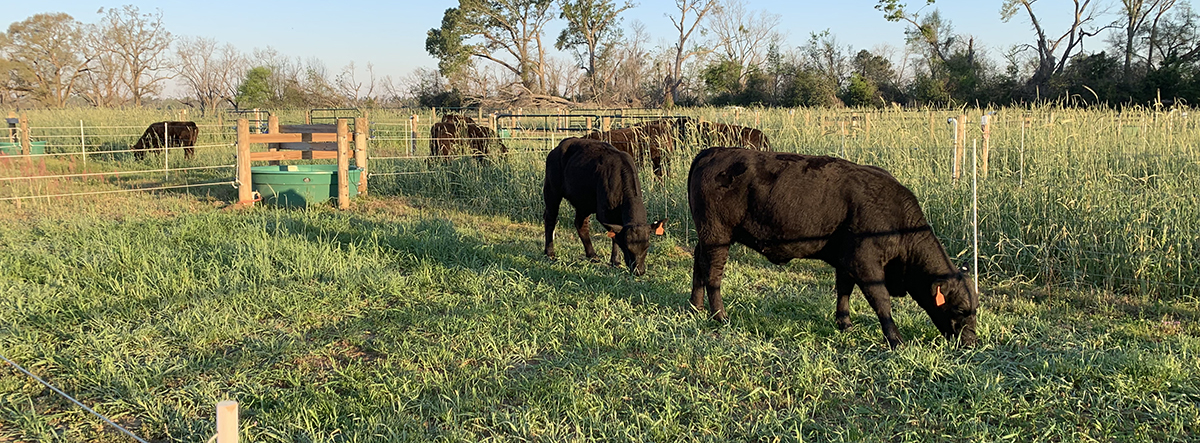
Increasing SOC is crucial for enhancing soil health and agricultural productivity, yet it remains a challenge for farmers. Levels of SOC are determined by the balance between carbon inputs—primarily from plant residues like roots and leaves or soil amendments—and carbon losses through harvest or microbial decomposition. These management choices collectively help tip the carbon balance in favor of soil enrichment. However, building SOC is a gradual process, typically taking three to five years to show measurable changes though this timeline can vary depending on climate, soil type, and landscape conditions. Paying attention to soil carbon is critical as it directly influences soil health, enhancing fertility, water retention, and overall resilience, making it a cornerstone of regenerative agriculture and sustainable farming practices.
Quantifying soil organic carbon: methods, applications and challenges
Soil organic carbon is a widely accepted and critical metric for soil health, linked to nutrient cycling and water storage. From a management perspective, organic carbon is often the most important form of soil carbon because it is directly influenced by agricultural practices and serves as a key indicator of soil fertility and long-term sustainability. Accurate quantification of SOC in agricultural soils is essential for improving soil health, enhancing resilience to stressors, and supporting climate change mitigation, requiring credible and dynamic measurement methods to inform management practices and policy decisions (Paustian et al., 2017).
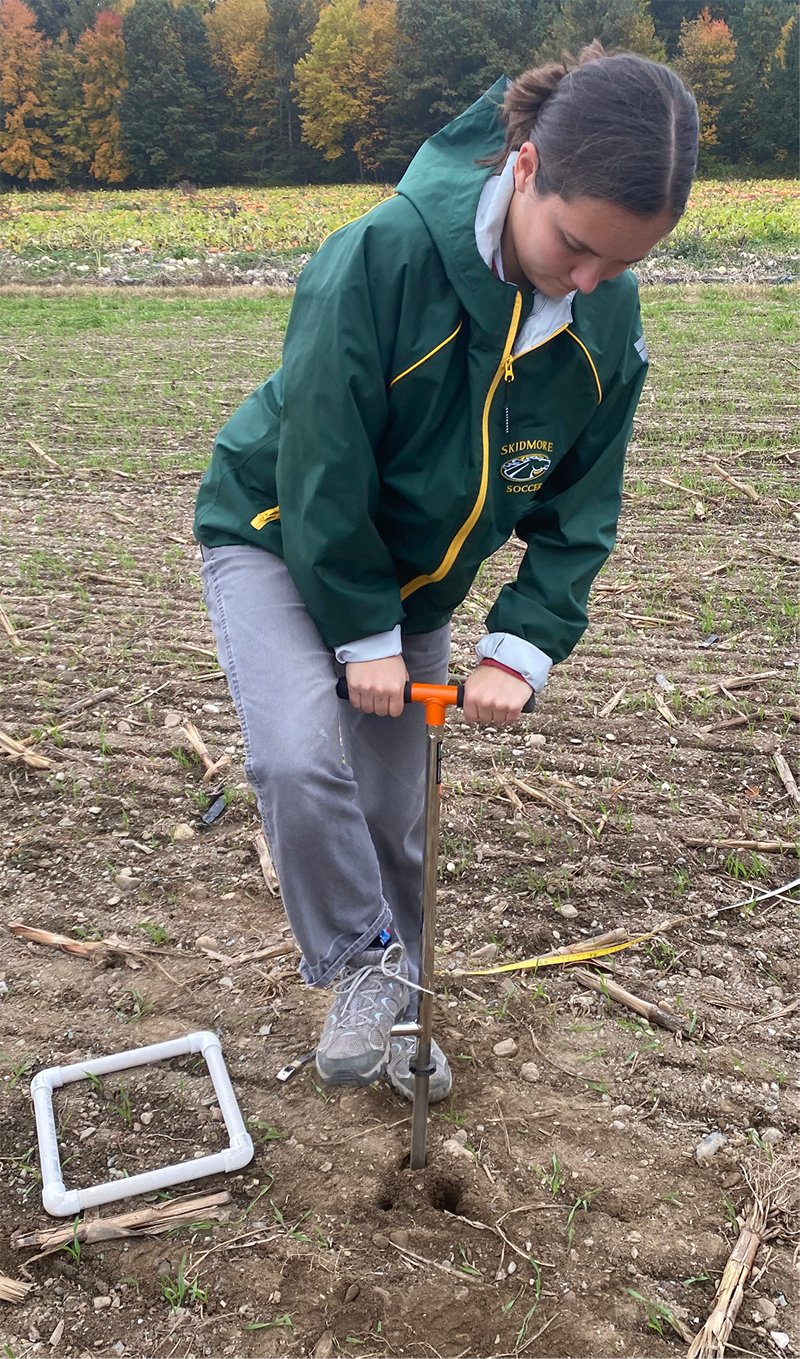
The measurement and interpretation of SOC present challenges due to SOC’s slow response to management changes and the necessity for deeper soil sampling and bulk density measurements for accurate carbon storage assessment. Direct measurement of SOC usually involves gathering soil samples and analyzing them using dry combustion methods, which are seen as the benchmark for establishing carbon concentration. Researchers have created more efficient sampling strategies, such as georeferenced benchmark sites, which decrease the number of samples required while preserving accuracy. Additionally, spectroscopic techniques, like near-infrared spectroscopy (NIRS), present quicker and more affordable options for SOC analysis although they need careful calibration. Many laboratories can provide SOC-quantifying services in addition to regular soil chemical or nutrient analysis.
Process-based models, such as the Rothamsted Carbon Model (RothC) and DeNitrification-DeComposition (DNDC) Model, provide useful information into SOC dynamics by simulating how various management practices and environmental conditions influence carbon stocks over time. These models are especially helpful for large-scale evaluations and carbon offset programs where direct measurement may not be possible. Agricultural management practices like conservation tillage, residue management, organic farming, and biochar application significantly enhance soil carbon sequestration, which can be effectively monitored through simulation models and remote-sensing techniques to develop site-specific strategies for climate change mitigation (Mandal et al., 2022). Several indicators can provide valuable insights into carbon dynamics and microbial activity, including potential carbon mineralization, permanganate oxidizable carbon, water-extractable organic carbon, and β-glucosidase enzyme activity, all of which are strongly correlated with SOC and respond positively to soil health practices.
The applications of SOC quantification are extensive, ranging from enhancing soil health on individual farms to supporting global climate change mitigation efforts or climate credit programs. One carbon credit typically refers to a ton of CO2 or equivalent greenhouse gas (CO2e) removal from the atmosphere (Oldfield et al., 2022). Managing soil organic carbon could represent 25% of the potential of nature-based climate mitigation strategy, part of which (40%) can be achieved by protecting existing carbon with the remainder (60%) achieved by rebuilding depleted stocks. This makes it a significant strategy for climate change mitigation while benefiting agricultural systems (Bossio et al., 2020).
As the U.S. and European Union (EU) are deliberating carbon-based policy mechanisms to scale carbon credits and SOC sequestration programs, government initiatives in places like Australia and Canada have effectively incorporated SOC measurement into carbon offset programs, encouraging farmers to adopt techniques that improve carbon sequestration (Oldfield et al., 2022). For instance, Australia's Emissions Reduction Fund uses both direct measurement and modeling to calculate SOC changes, enabling farmers to acquire carbon credits for environmentally friendly practices like stubble retention and conversion to pasture (Australian Government, 2021). The Conservation Cropping Protocol in Alberta, Canada, likewise compensates farmers for switching from traditional tillage to no-till practices, which have been proven to raise SOC stocks over time (Alberta Government, 2018).
The EU's Technical Guidance Handbook is an individual program that facilitates the development of result-based payment schemes for carbon farming across Europe by synthesizing international best practices, stakeholder insights, and decades of EU experience with farmland biodiversity programs to support wide-scale climate mitigation and adaptation initiatives (Radley et al., 2021). In the U.S., the Climate Action Reserve’s Soil Enrichment Protocol (CAR SEP) is one such initiative that enables large-scale generation of premium carbon credits by integrating evolving agricultural sampling techniques and soil biogeochemical modeling to support credit generation timing that benefits growers (e.g., Climate Action Reserve, 2022). Other private companies have employed different approaches for their carbon credits program, providing different carbon quantification options.
These soil health indicators are influenced by factors such as temperature, precipitation, and soil texture with cooler, wetter, and clay-rich environments generally supporting higher values. Soil organic carbon sequestration is a crucial, but often misrepresented, concept in climate change mitigation. It requires precise terminology to distinguish between actual carbon storage, SOC loss mitigation, and negative emissions to avoid exaggerated expectations (Don et al., 2024). While often used interchangeably, “carbon sequestration” is the process of capturing and storing atmospheric carbon dioxide while “carbon storage” refers to the location or state where the captured carbon is held. For instance, compared with conventional agricultural systems, agroforestry systems can help to sequester larger carbon that can be quantified (Figure 3).
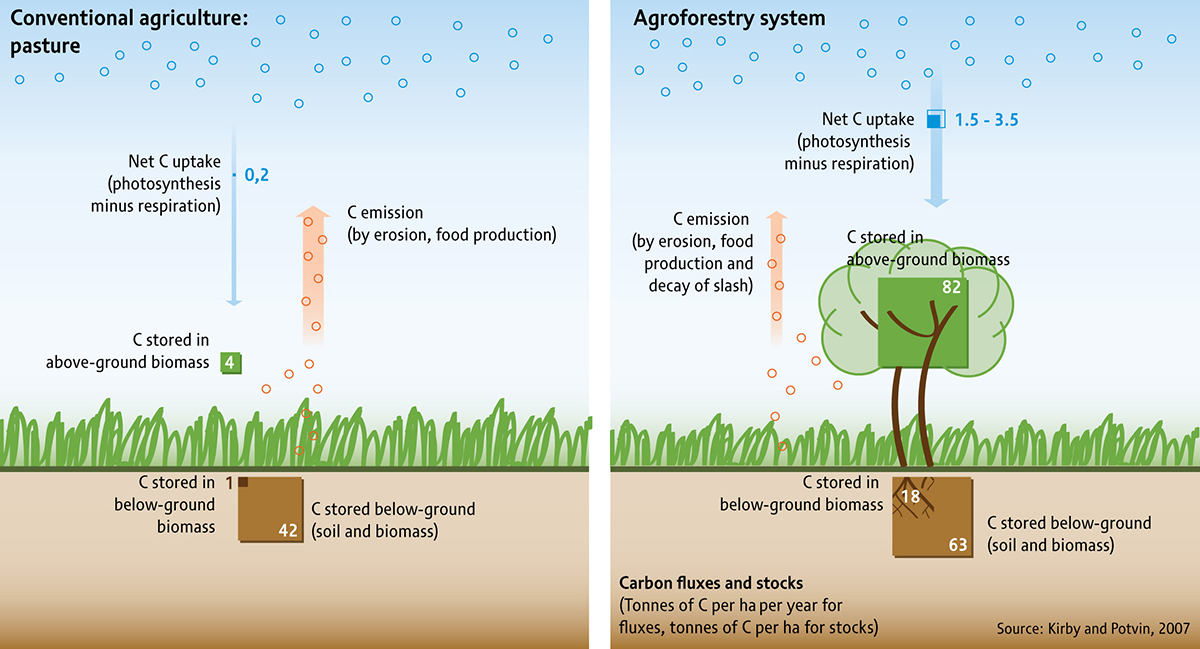
While SOC remains a primary metric, combining it with additional indicators, such as a 24-hour potential carbon mineralization assay, can enhance the sensitivity and reliability of measuring management impacts. This multi-indicator approach offers a robust framework for evaluating the effectiveness of practices that build soil carbon and guiding sustainable carbon management. The potential for scalable, effective soil carbon management increases as the scientific community continues to improve SOC quantification techniques, providing optimism for a more environmentally friendly agricultural future that increases agricultural resilience and productivity while assisting with global carbon reduction targets (Vermeulen et al., 2019). A path forward lies in continuous mechanistic understanding of soil carbon storage and sequestration assessments that respond to management practices, as well as standardizing the SOC quantification processes.
Alberta Government. (2021). Alberta quantification protocol for conservation cropping. https://open.alberta.ca/publications/9780778596288
Australian Government. (2018). National Energy Productivity Plan 2015–2030. https://www.dcceew.gov.au/sites/default/files/documents/national-energy-productivity-plan.pdf
Bossio, D. A., Cook-Patton, S. C., Ellis, P. W., Fargione, J., Sanderman, J., Smith, P., ... & Griscom, B. W. (2020). The role of soil carbon in natural climate solutions. Nature Sustainability, 3(5), 391-398.
Climate Action Reserve. (2022). Soil enrichment protocol (version 1.1). https://climateactionreserve.org/wp-content/uploads/2022/06/Soil-Enrichment-Protocol-V_1.1-final.pdf
Don, A., Seidel, F., Leifeld, J., Kätterer, T., Martin, M., Pellerin, S., ... & Chenu, C. (2024). Carbon sequestration in soils and climate change mitigation—Definitions and pitfalls. Global Change Biology, 30(1), e16983.
Kane, D. A., Bradford, M. A., Fuller, E., Oldfield, E. E., & Wood, S. A. (2021). Soil organic matter protects US maize yields and lowers crop insurance payouts under drought. Environmental Research Letters, 16 (4), 044018, https://www.doi.org/10.1088/1748-9326/abe492
Kirby, K. R., & Potvin, C. (2007). Variation in carbon storage among tree species: Implications for the management of a small-scale carbon sink project. Forest Ecology and Management, 246(2-3), 208–221.
Lal, R., 2021. Soil management for carbon sequestration. South African Journal of Plant and Soil, 38(3), 231–237.
Lal, R., Griffin, M., Apt, J., Lave, L., & Morgan, M.G. (2004). Managing soil carbon. Science, 304(5669), 393–393.
Mandal, A., Majumder, A., Dhaliwal, S. S., Toor, A. S., Mani, P. K., Naresh, R. K., ... & Mitran, T. (2022). Impact of agricultural management practices on soil carbon sequestration and its monitoring through simulation models and remote sensing techniques: A review. Critical Reviews in Environmental Science and Technology, 52(1), 1–49.
Oldfield, E. E., Eagle, A. J., Rubin, R. L., Rudek, J., Sanderman, J., & Gordon, D. R. (2022). Crediting agricultural soil carbon sequestration. Science, 375(6586), 1222–1225.
Paustian, K., Collier, S., Baldock, J., Burgess, R., Creque, J., DeLonge, M., ... & Jahn, M. (2017). Quantifying soil carbon measurement for agricultural soils management: A consensus view from science. Point Blue Conservation Science.
Qiao, L., Wang, X., Smith, P., Fan, J., Lu, Y., Emmett, B., Li, R., Dorling, S., Chen, H., & Liu, S. (2022). Soil quality both increases crop production and improves resilience to climate change. Nature Climate Change, 12, 574–580. https://www.doi.org/10.1038/s41558-022-01376-8
Radley, G., Keenleyside, C., Frelih-Larsen, A., McDonald, H., Pyndt Andersen, S., Qwist-Hoffmann, H., ... & Russi, D. (2021). Setting up and implementing result-based carbon farming mechanisms in the EU: Technical guidance handbook. Publications Office of the European Union. https://data.europa.eu/doi/10.2834/056153.
Saccá, M. L., Barra Caracciolo, A., Di Lenola, M., & Grenni, P. (2017). Ecosystem services provided by soil microorganisms. In L. Martin, G. Paola, & G. Mauro (Eds.), Soil biological communities and ecosystem resilience (pp. 9–24). Springer.
Shu, X., He, J., Zhou, Z., Xia, L., Hu, Y., Zhang, Y., Zhang, Y., Luo, Y., Chu, H., Liu, W., & Yuan, S. (2022). Organic amendments enhance soil microbial diversity, microbial functionality and crop yields: A meta-analysis. Science of the Total Environment, 829, 154627.
Vermeulen, S., Bossio, D., Lehmann, J., Luu, P., Paustian, K., Webb, C., ... & Warnken, M. (2019). A global agenda for collective action on soil carbon. Nature Sustainability, 2(1), 2–4.
Graduate Student Committee: Connect with us!
This article is a contribution of the ASA, CSSA, and SSSA Graduate Student Committee. If you would like to provide feedback to this committee on its work or want to volunteer with the committee to help plan any of its activities or write articles like this one, please reach out to Jessica Bezerra de Oliveira, the 2025 Chair of the committee!
If you would like to stay up to date with our committee, learn more about our work, contribute to one of our CSA News articles or suggest activities you would like us to promote, watch your emails, connect with us on X or visit: agronomy.org/membership/committees/view/ACS238/members, crops.org/membership/committees/view/ACS238/members, or soils.org/membership/committees/view/ACS238/members.
Text © . The authors. CC BY-NC-ND 4.0. Except where otherwise noted, images are subject to copyright. Any reuse without express permission from the copyright owner is prohibited.




